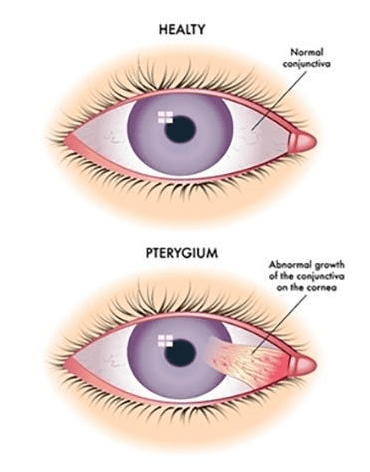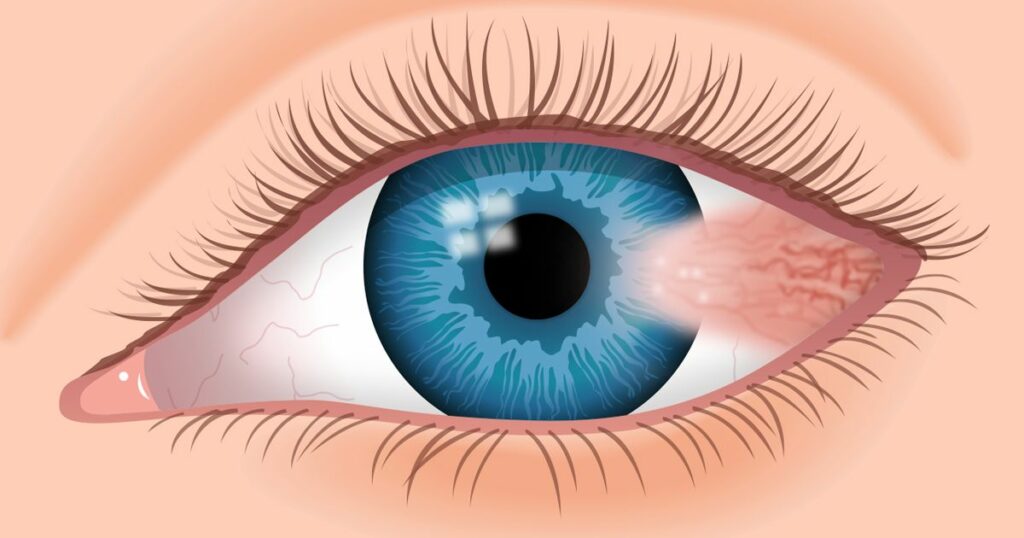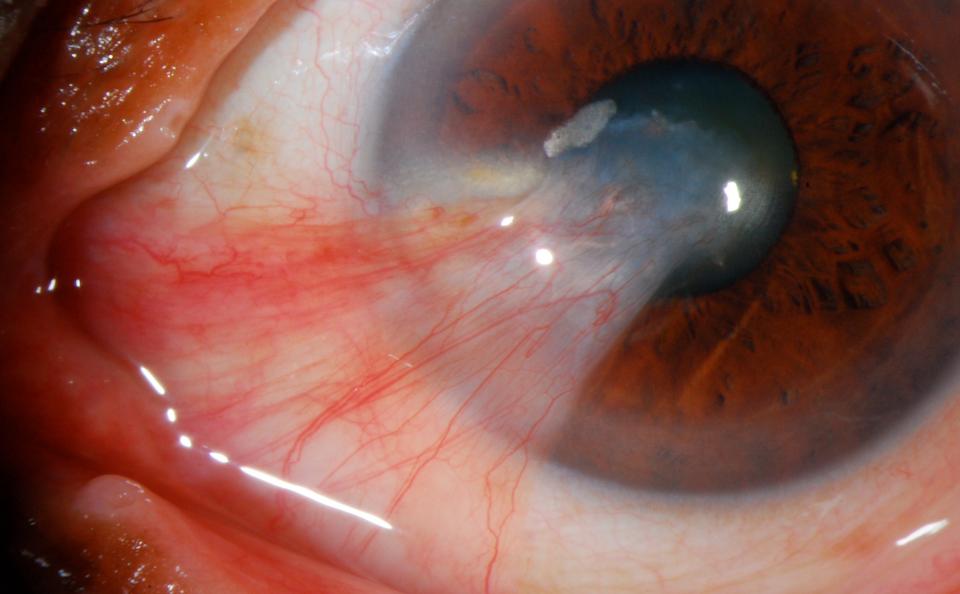A pterygium is a growth of the conjunctiva or mucous membrane that covers the white part of your eye over the cornea. The cornea is the clear front covering of the eye. This benign or non-cancerous growth is often shaped like a wedge. A pterygium usually does not cause problems or require treatment, but it can be removed if it interferes with your vision.
What causes a pterygium?
While the exact cause of pterygium remains known, there is one theory that too much exposure to ultraviolet (UV) light can lead to these growths. The condition is more prevalent in people living in warm climates and spend a great deal of time outdoors in sunny or windy environments. Also, exposing your eyes regularly to certain elements increases your chances of developing pterygium. These elements include pollen, sand, smoke and wind.

Symptoms of pterygium
While a pterygium does not always cause symptoms, when it does the symptoms are usually mild, including redness, blurred vision, and eye irritation. A burning sensation or itchiness might also occur.
A pterygium that grows large enough to cover your cornea can interfere with your vision. Moreover, a thick or larger pterygium can also cause you to feel like there’s a foreign object in your eye. Wearing contact lenses might be out of the question when you have a pterygium due to discomfort caused.
How serious is a pterygium?
Although a rare occurrence, a pterygium can lead to severe scarring on your cornea. Such scarring on the cornea will need to be treated because it can cause vision loss.
Treatment in minor cases usually involves eye drops or ointment to treat inflammation. However, in serious cases, treatment can involve surgical removal of the pterygium.
How is pterygium diagnosed?
Diagnosing a pterygium is straightforward. At Vision Express, our eye doctor may diagnose this condition based on a physical examination using a slit lamp. This lamp allows the doctor to see your eye with the help of magnification and bright lighting. If your doctor needs to do additional tests, they may include:
- Visual acuity test: This test involves reading letters on an eye chart.
- Corneal topography: This medical mapping technique is used to measure curvature changes in your cornea.
- Photo documentation: This procedure involves taking pictures to track the growth rate of the pterygium.
How is pterygium treated?
A pterygium does not usually require any treatment unless it’s blocking your vision or causing severe discomfort. At Vision Express, your eye doctor might want to check your eyes occasionally to see if the growth is causing vision problems.
What about medications?
If the pterygium is causing much irritation or redness, your doctor may prescribe eye drops or eye ointments that contain corticosteroids to reduce inflammation.
How about surgery?
Your doctor may recommend surgery to remove the pterygium if eye drops or ointments do not provide relief. Surgery is also done when a pterygium causes a loss of vision, or a condition called astigmatism, which can result in blurry vision. You can also discuss surgical procedures with your doctor at Vision Express if you want the pterygium removed for cosmetic reasons.
Obviously, there are risks associated with these operations. In some cases, a pterygium can return after being surgically removed. Your eye might also feel dry and irritated after surgery. Your doctor can prescribe medications to provide relief and reduce the risk of having a pterygium grow back.

How can one avoid getting a pterygium?
As much as possible, avoid exposure to environmental factors that can cause a pterygium. Wear sunglasses or a hat to shield your eyes from sunlight, wind, and dust. Your sunglasses should also provide protection from the sun’s ultraviolet (UV) rays.
If you already have a pterygium, limiting your exposure to the following can slow its growth: wind, dust, pollen, smoke, and sunlight.
Avoiding the above conditions can also help prevent pterygiums from returning if you’ve had any removed.


